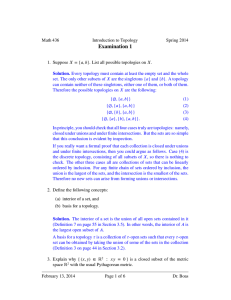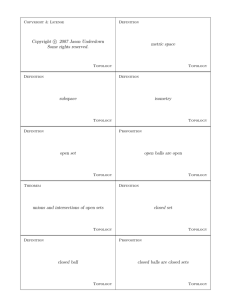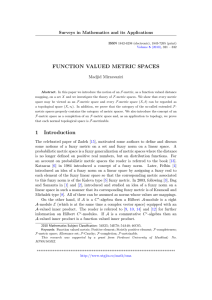Examination 1
advertisement
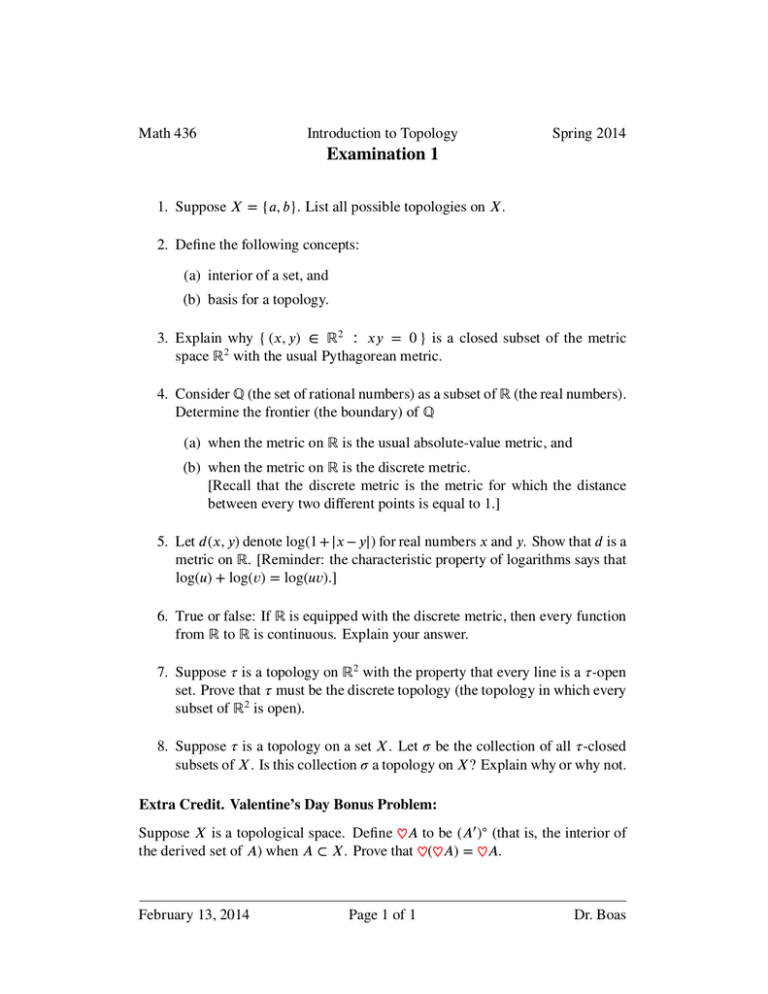
Math 436
Introduction to Topology
Spring 2014
Examination 1
1. Suppose 𝑋 = {𝑎, 𝑏}. List all possible topologies on 𝑋.
2. Define the following concepts:
(a) interior of a set, and
(b) basis for a topology.
3. Explain why { (𝑥, 𝑦) ∈ ℝ2 ∶ 𝑥𝑦 = 0 } is a closed subset of the metric
space ℝ2 with the usual Pythagorean metric.
4. Consider ℚ (the set of rational numbers) as a subset of ℝ (the real numbers).
Determine the frontier (the boundary) of ℚ
(a) when the metric on ℝ is the usual absolute-value metric, and
(b) when the metric on ℝ is the discrete metric.
[Recall that the discrete metric is the metric for which the distance
between every two different points is equal to 1.]
5. Let 𝑑(𝑥, 𝑦) denote log(1 + |𝑥 − 𝑦|) for real numbers 𝑥 and 𝑦. Show that 𝑑 is a
metric on ℝ. [Reminder: the characteristic property of logarithms says that
log(𝑢) + log(𝑣) = log(𝑢𝑣).]
6. True or false: If ℝ is equipped with the discrete metric, then every function
from ℝ to ℝ is continuous. Explain your answer.
7. Suppose 𝜏 is a topology on ℝ2 with the property that every line is a 𝜏-open
set. Prove that 𝜏 must be the discrete topology (the topology in which every
subset of ℝ2 is open).
8. Suppose 𝜏 is a topology on a set 𝑋. Let 𝜎 be the collection of all 𝜏-closed
subsets of 𝑋. Is this collection 𝜎 a topology on 𝑋? Explain why or why not.
Extra Credit. Valentine’s Day Bonus Problem:
Suppose 𝑋 is a topological space. Define ♡𝐴 to be (𝐴′ )◦ (that is, the interior of
the derived set of 𝐴) when 𝐴 ⊂ 𝑋. Prove that ♡(♡𝐴) = ♡𝐴.
February 13, 2014
Page 1 of 1
Dr. Boas
![MA342A (Harmonic Analysis 1) Tutorial sheet 2 [October 22, 2015] Name: Solutions](http://s2.studylib.net/store/data/010415895_1-3c73ea7fb0d03577c3fa0d7592390be4-300x300.png)
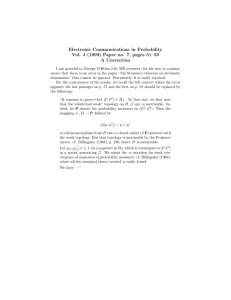
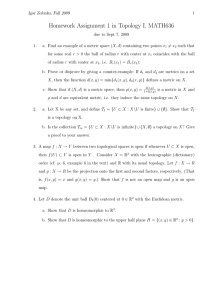




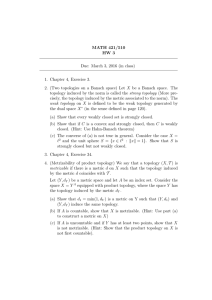
![MA3421 (Functional Analysis 1) Tutorial sheet 3 [October 16, 2014] Name: Solutions](http://s2.studylib.net/store/data/010731561_1-e98965fabfe11482064da197373bd579-300x300.png)
